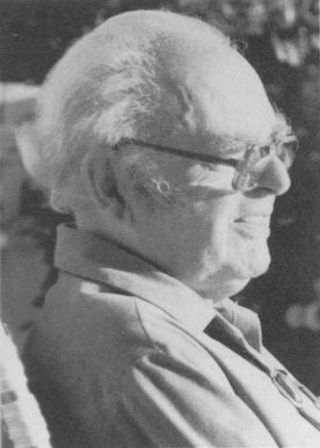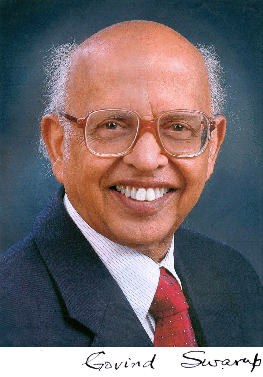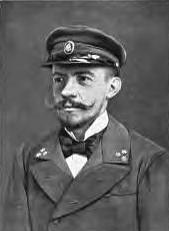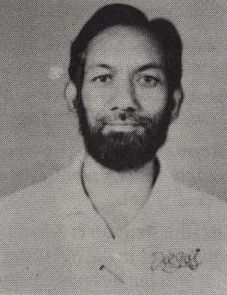Related Research Articles

The International Astronomical Union is a non-governmental organisation with the objective of advancing astronomy in all aspects, including promoting astronomical research, outreach, education, and development through global cooperation. It was founded in 1919 and is based in Paris, France.
George Ogden Abell was an American educator. Teaching at UCLA, priorly he worked as a research astronomer, administrator, as a popularizer of science and of education, and as a skeptic. He earned his B.S. in 1951, his M.S. in 1952 and his Ph.D. in 1957, all from the California Institute of Technology. He was a Ph.D. student under Donald Osterbrock. His astronomical career began as a tour guide at the Griffith Observatory in Los Angeles. Abell made great contributions to astronomical knowledge which resulted from his work during and after the National Geographic Society - Palomar Observatory Sky Survey, especially concerning clusters of galaxies and planetary nebulae. A galaxy, an asteroid, a periodic comet, and an observatory are all named in his honor. His teaching career extended beyond the campus of UCLA to the high school student oriented Summer Science Program, and educational television. He not only taught about science but also about what is not science. He was an originating member of the Committee on Scientific Investigation of Claims of the Paranormal now known as the Committee for Skeptical Inquiry.

Sir Joseph Norman Lockyer was an English scientist and astronomer. Along with the French scientist Pierre Janssen, he is credited with discovering the gas helium. Lockyer also is remembered for being the founder and first editor of the influential journal Nature.

Sir Frank Watson Dyson, KBE, FRS, FRSE was an English astronomer and the ninth Astronomer Royal who is remembered today largely for introducing time signals ("pips") from Greenwich, England, and for the role he played in proving Einstein's theory of general relativity.

Edward Charles Pickering was an American astronomer and physicist and the older brother of William Henry Pickering. Along with Carl Vogel, Pickering discovered the first spectroscopic binary stars. He wrote Elements of Physical Manipulations.

George Ellery Hale was an American astrophysicist, best known for his discovery of magnetic fields in sunspots, and as the leader or key figure in the planning or construction of several world-leading telescopes; namely, the 40-inch refracting telescope at Yerkes Observatory, 60-inch Hale reflecting telescope at Mount Wilson Observatory, 100-inch Hooker reflecting telescope at Mount Wilson, and the 200-inch Hale reflecting telescope at Palomar Observatory. He played a key role in the foundation of the International Union for Cooperation in Solar Research and the National Research Council, and in developing the California Institute of Technology into a leading research university.

Alfred Fowler, CBE FRS was an English astronomer and spectroscopist.

Bartholomeus Jan "Bart" Bok was a Dutch-American astronomer, teacher, and lecturer. He is best known for his work on the structure and evolution of the Milky Way galaxy, and for the discovery of Bok globules, which are small, densely dark clouds of interstellar gas and dust that can be seen silhouetted against brighter backgrounds. Bok suggested that these globules may be in the process of contracting, before forming into stars.
HD 172051 is a single, yellow-hued star in the southern constellation of Sagittarius. The star is barely bright enough to be seen with the naked eye, having an apparent visual magnitude of 5.85. Based upon an annual parallax shift of 76.64 mas, it is located some 43 light years from the Sun. It is moving away from the Sun with a radial velocity of +37 km/s.

Govind Swarup was a pioneer in radio astronomy. In addition to research contributions in multiple areas of astronomy and astrophysics, he was a driving force behind the building of "ingenious, innovative and powerful observational facilities for front-line research in radio astronomy".

Leopold Goldberg was an American astronomer who held professorships at Harvard and the University of Michigan and the directorships of several major observatories. He was president of both the International Astronomical Union and the American Astronomical Society. His research focused on solar physics and the application of atomic physics to astronomy, and he led many of the early efforts to study the Sun from space telescopes.

Georges Lecointe was a Belgian naval officer and scientist. He was captain of the Belgica and second-in-command of the Belgian Antarctic Expedition, the first to overwinter in Antarctica. After his return to Belgium he was the founder of the International Polar Organization and deeply involved in the foundation of the International Research Council and the International Astronomical Union.

The Valz Prize(Prix Valz) was awarded by the French Academy of Sciences, from 1877 through 1970, to honor advances in astronomy.

Vijay Kumar Kapahi was an Indian astrophysicist and the director of the National Centre for Radio Astrophysics, an autonomous division of Tata Institute of Fundamental Research. Known for his research on radio galaxies, quasars and observational cosmology, Kapahi was an elected fellow of all the three major Indian science academies – Indian Academy of Sciences, Indian National Science Academy and National Academy of Sciences, India – as well as of the Maharashtra Academy of Sciences. The Council of Scientific and Industrial Research, the apex agency of the Government of India for scientific research, awarded him the Shanti Swarup Bhatnagar Prize for Science and Technology for his contributions to physical sciences in 1987.

Edith Jones Woodward was an American astronomer and college professor. She did research on binary stars, and taught at William Paterson College in New Jersey for over twenty years.
Lidia van Driel-Gesztelyi is a Hungarian solar scientist and professor of physics at the Mullard Space Science Laboratory of University College London. She also maintains affiliations with Solar and Stellar Activity Research Team at Konkoly Observatory of the Hungarian Academy of Sciences and the Space Research Laboratory (LESIA) of Paris Observatory. She has been Editor-in-Chief of the journal Solar Physics since 2005 and has served in leadership roles within the International Astronomical Union.

Cora Gertrude Burwell was an American astronomical researcher specialized in stellar spectroscopy. She was based at Mount Wilson Observatory from 1907 to 1949.

The Observatorio Manuel Foster, or Manuel Foster Observatory, is an astronomical observatory constructed on Cerro San Cristóbal near Santiago, Chile in 1903. This site was originally known as the D. O. Mills Observatory after the philanthropist Darius Ogden Mills. It was built as an offshoot of the Lick Observatory to observe stars in the southern hemisphere, and, under the direction of the American astronomer W. W. Campbell, was used in an extensive project to determine the apex of the Sun's motion through space.

Dr Natchimuthuk "Nat" Gopalswamy is an Indian American Solar physicist. He is currently a staff scientist at the Heliophysics Division of NASA’s Goddard Space Flight Center.

Ferdinand Ellerman was an American astronomer and photographer. He spent a good part of his career as an associate of the solar astronomer George E. Hale, and is known for his study of a phenomenon in the solar chromosphere later dubbed Ellerman bombs.
References
- ↑ "The International Union for Cooperation in Solar Research". Nature . 72 (1872): 490. 1905. doi: 10.1038/072490a0 .
- ↑ "L'Union International Pour Les Recherches Solaires". L'Astronomie (in French). 27: 386–394. 1907. Bibcode:1913LAstr..27..386.
- ↑ Wilson, H. C. (October 1910). "The fourth conference of the International Union for Co-operation in Solar Research". Publications of the Astronomical Society of the Pacific. 22 (133): 169–170. doi: 10.1086/122011 . JSTOR 40691725. S2CID 122440016.
- ↑ Frost, Edwin B. (October 1910). "MINOR CONTRIBUTIONS AND NOTES: The International Union for Co-operation in Solar Research". Astrophysical Journal . 32: 261–262. Bibcode:1910ApJ....32..258F. doi: 10.1086/141803 .
- ↑ Babcock, H.D. (October 21, 1910). "The Fourth Conference of the International Union for Cooperation in Solar Research". Science. 32 (825): 541–546. doi:10.1126/science.32.825.541. PMID 17842852. S2CID 4050669.
- ↑ Adams, Walter S. (February 1949). "The History of the International Astronomical Union". Publications of the Astronomical Society of the Pacific. 61 (358): 5–12. Bibcode:1949PASP...61....5A. doi: 10.1086/126108 . S2CID 121781444.